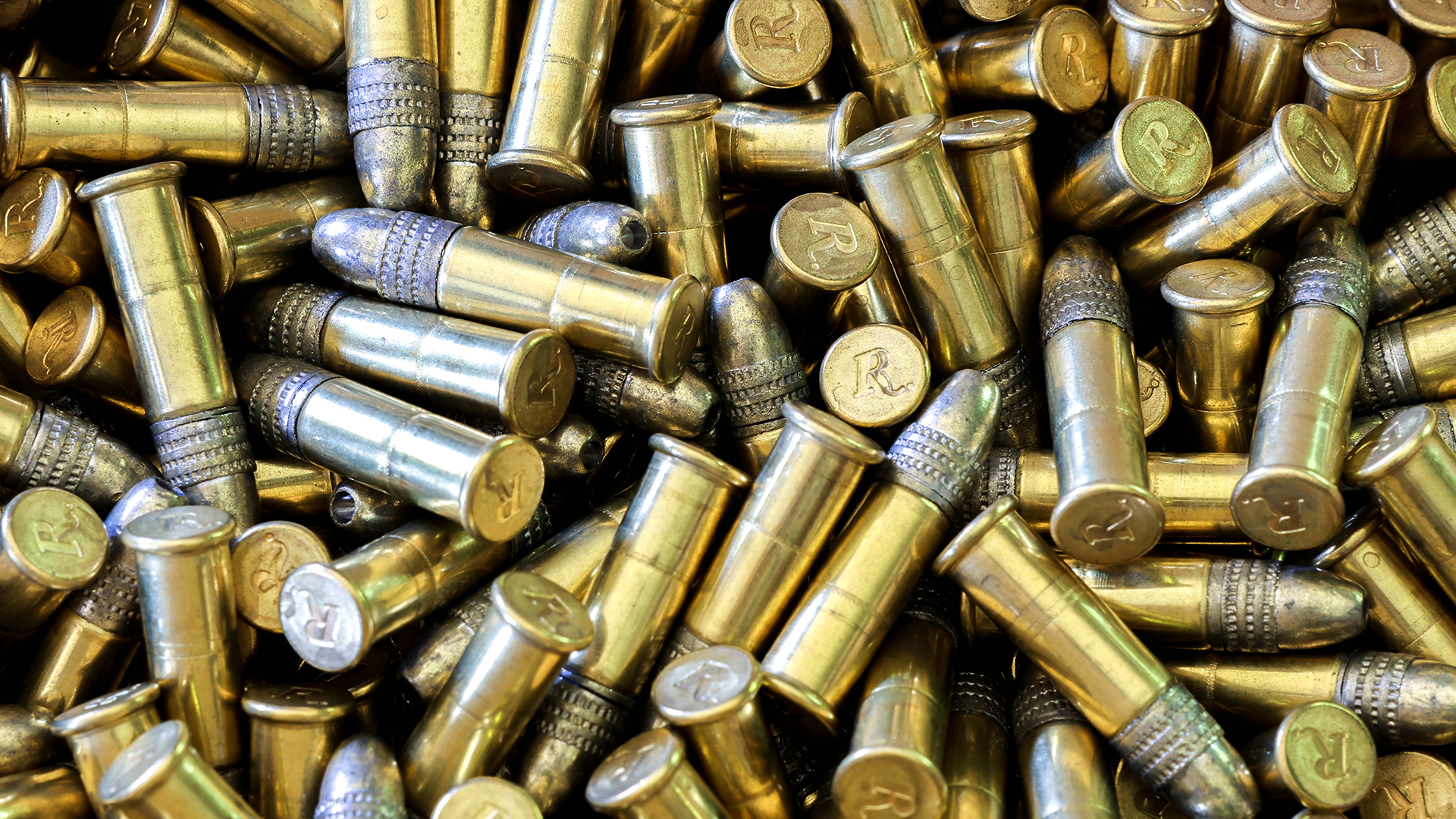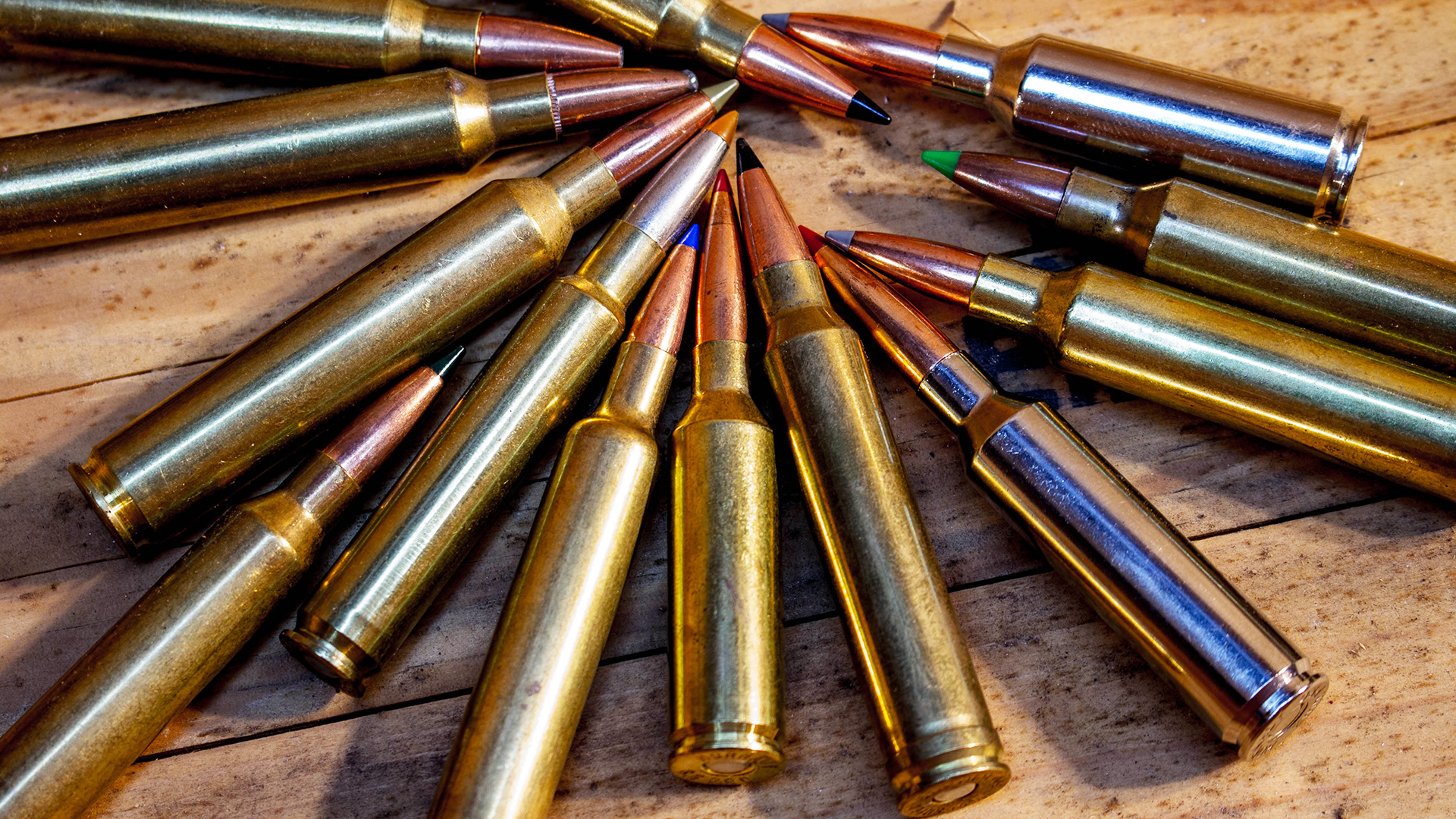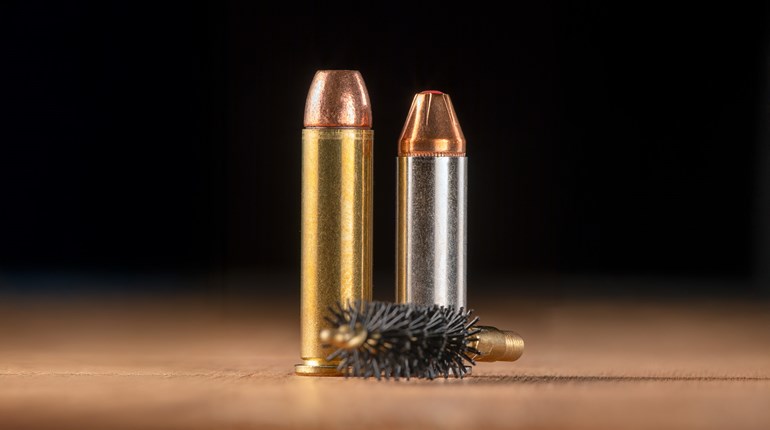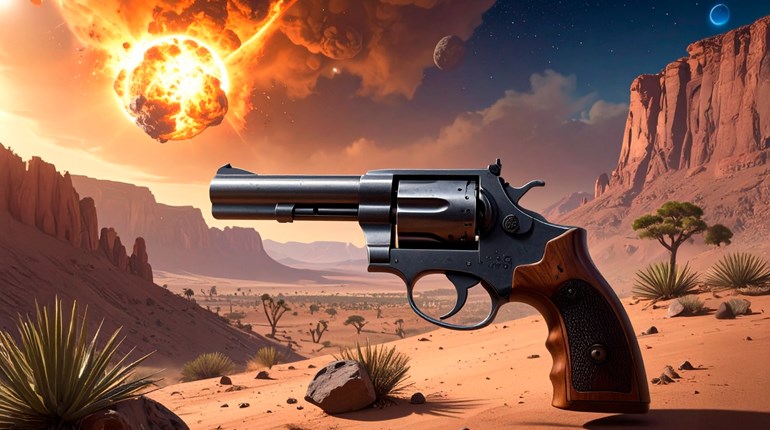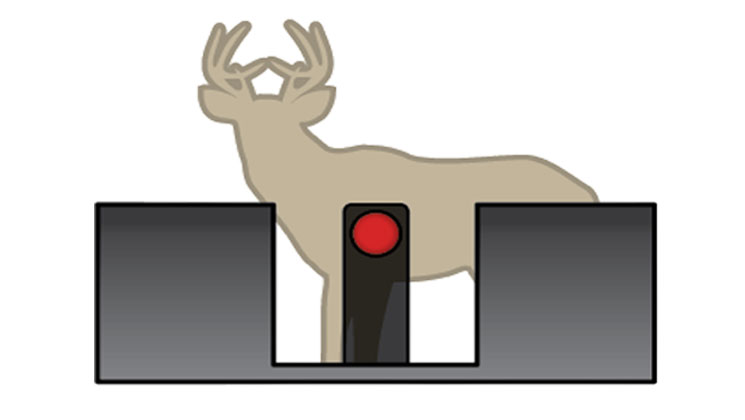
Hunting with an iron-sighted handgun is similar to bowhunting in that the range for ethically taking game is significantly reduced from what we normally expect with a rifle. The marksmanship skill of the hunter is one factor that determines that range, and iron sights add an extra dimension to forming a good sight picture before pulling the trigger.
With an optic, all we have to do is superimpose the crosshair or dot on the target area of the animal and execute an acceptable trigger pull to achieve success. Iron sights first require aligning the front and rear sights in a specific and consistent manner. Then the challenge is to find a suitable sight picture, or the position of the sights relative to the target area on the animal, and perform a trigger pull that does not interfere with either sight alignment or placement.
Most handgun manufacturers factory-set iron sights for a sight picture that requires a 6 o’clock hold. In order to hit the center of a standard 25-yard bullseye target, the top of the front sight has to be positioned roughly 3 inches low at the bottom of the black center, hence 6 o’clock. Applying that to an animal adds stress and difficulty when time is at a premium.
A better option for hunting is a point-of-aim, point-of-impact sight picture. This is called a center hold in bullseye shooting lingo. To a hunter this means that with proper sight alignment and a good trigger pull, the bullet will impact the animal at the spot where the top of the front sight is positioned.
Another option, which I prefer, is called floating the dot. If the front sight has a dot (or colored insert) embedded in it, superimpose (float) the dot on the target area while keeping your aiming eye focused hard on the dot as viewed through the notch of the rear sight. The eye will automatically center the dot in the notch and on the target area of the animal. This method attenuates apparent sight movement on the target and reduces reluctance to pull the trigger because of perceived motion. “Float the dot, shoot the shot” is a phrase that will add new meaning to the definition of sight picture once you try it.




